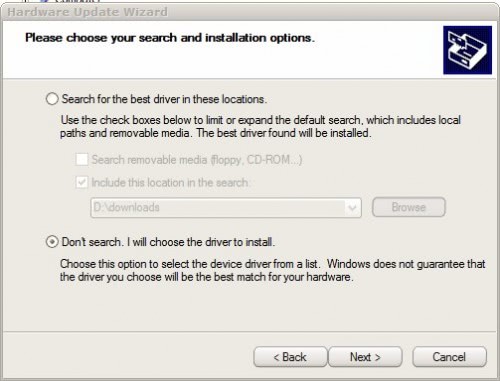
After an afternoon of failures I have worked out how to flip the Removable Media Bit (RMB) on usb drives and SDHC cards under a 64 bit install of windows 7. This is based off the Hitatchi Microdrive trick, but I found a 64 bit compiled version of the driver on some german site. I did not make this driver I just found it. 64 bit Driver here Instructions Part A First you need to find the name of your USB or SDHC device run -> regedit -> navigate to: HKEY_LOCAL_MACHINE SYSTEM ControlSet001 Enum USBSTOR find the key that matches your device. Right click on the key and click 'copy key name' My SDHC card plugged into a laptop card reader looks like 'USBSTORE Disk&Ven_Multiple&Prod_Card__Reader&Rev_1.00' Part B unzip the files above and open cfadisk.inf in notepad.
Scroll down to the section [cfadisk_device] you will see the line%Microdrive_devdesc% = cfadisk_install,IDE DiskTS64GCF400______________________________20101008 delete everything after the comma so you are left with%Microdrive_devdesc% = cfadisk_install, paste your device string starting from USBSTOR *whatever* into the line just after the comma, no spaces. You should have something that looks like this%Microdrive_devdesc% = cfadisk_install,USBSTOR Disk&Ven_Multiple&Prod_Card__Reader&Rev_1.00 repeat this process for the section immediately below called [cfadisk_device.NTamd64] If you are so inclined you can name your device at the bottom of the file by editing the text in the quotes in the last line after it says Microdrive_devdesc = 'your device name here' save the file, you now have a functioning driver. Activation code windows xp. Part C You now need to install the driver Open Device Manager, find your device and chose to update driver.
Tell windows you want to choose your own driver. Point it at your newly saved file. Windows will bitch and complain that the file is not signed, and not a compatible driver. Proceed anyways. Once installed you should see the USB device show up as a 'Disk Drive' Reboot Note: When I rebooted the first time, windows would not load, this was due to the driver being unsigned. When booting hit F8 to enter the bootloader, and choose to disable driver signing.
Alternatively you can disable driver signing by doing the following: run->cmd.exe Now type the following bcdedit.exe -set loadoptions DDISABLE_INTEGRITY_CHECKS press Enter: bcdedit.exe -set TESTSIGNING ON press Enter: When you reboot, you should find your USB or SDHC device listed as a fixed disk. You can now partition, make it a dynamic disk, install picky programs that wont run on a removable disk etc.
Jul 24, 2015 - USB Local Disk Driver This cfadisk driver will allow Windows to see a USB drive as a local, hard disk. Cfadisk USB Local Disk Driver allows a.

I have two USB thumb drives, none of them could be correctly installed on my new Win 7 (64bit) system. They work fine on Vista and XP.
Toshiba TransMemory 4GB (TransMemory) 2. US Airways 256MB drive (Mass Storage Device) When I plug it into a USB port, a bubble with the message appears: 'installing device drive software' Then after like 10 seconds, 'Device driver software was not successfully installed' When I navigate to Device Manager, it shows the device with an exclamation sign next to it. What should I do next? I know there has been numerous threads on USB Problem with x64 Win 7, but they mostly deal with data transmission between the computer and the USB drive. In my case, my device wasn't even properly installed -- i.e.